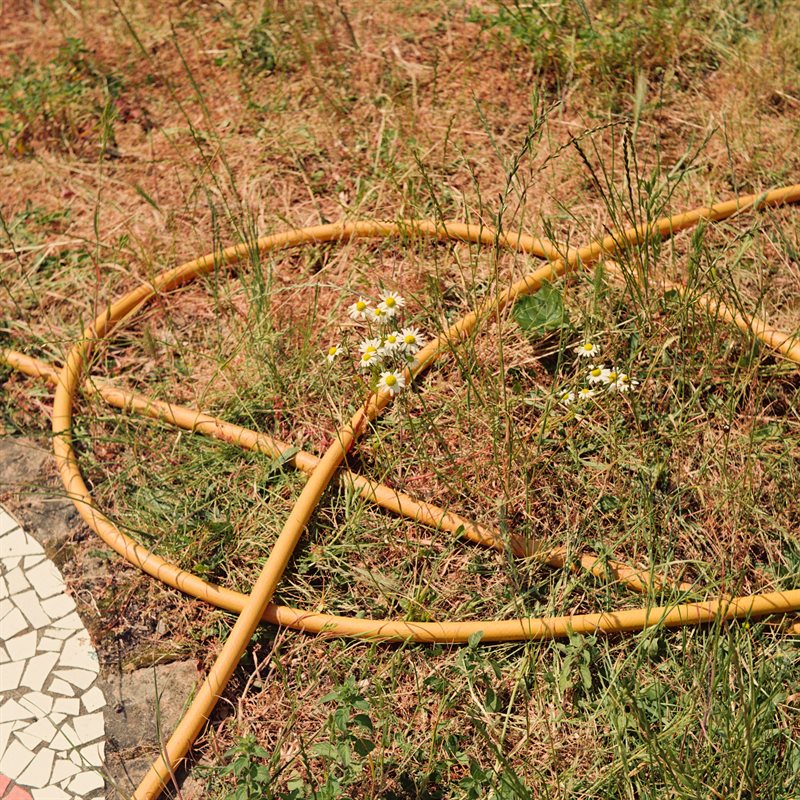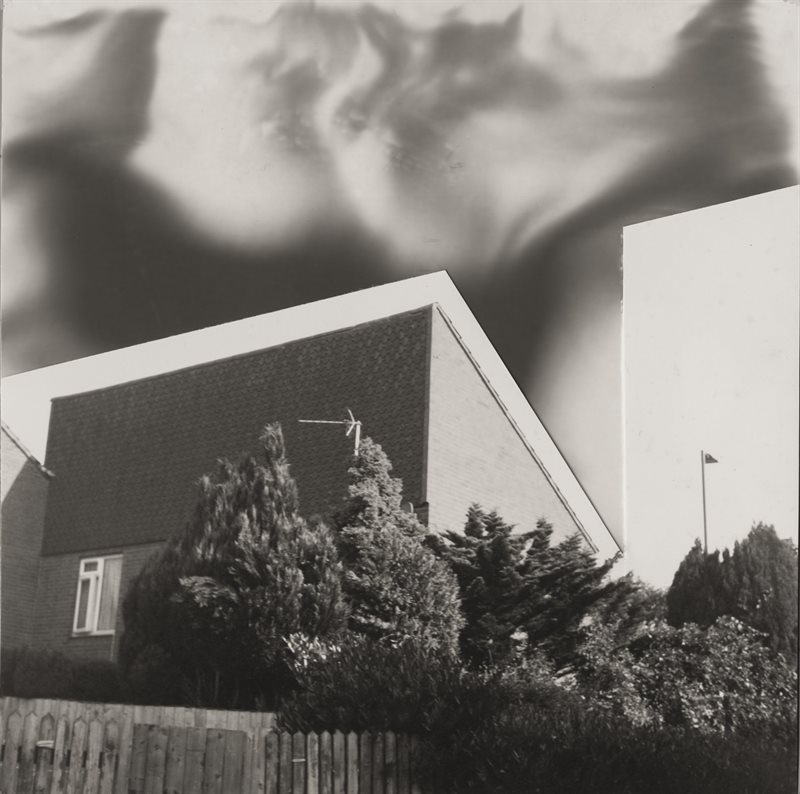A series of six photographic projects made by Emily Adzapour, Kev Hawken, Tetiana Kizeieva, Rita Pena, Jenni Sur, and Annie Warren.
The Meadows is an exhibition of work by six photographers and was completed as part of a residency programme supported by Nottingham's Make it Easy Lab (MIE) and a Participatory Research grant from the University of Nottingham. The aim of the project was to equip new photographers with technical skills and historical knowledge so that they might each make a photographic-document of the Meadows area based on their own interests and observations.
As a built environment there co-exists an 'old' Meadows of terraced houses and late-Victorian architecture, a 'new' Meadows that replaced slum-housing with Radburn-style social housing and, more recently, yet further attempts to redevelop the area to revive the community's fortunes. The history of the Meadows is complicated and often framed in negative terms emphasising decline, upheaval, and ongoing social problems. The work on show here offers other, more positive perspectives on the Meadows and its community, photographs that ask us to look more attentively at this place and to reconsider what we know and understand about the Meadows.
Kev Hawken

After being accepted onto this residency, I began to research The Meadows online. My initial findings were of an area with a negative reputation. However, further research and speaking to residents, community groups and leaders l found a welcoming community that more than challenged that reputation. This research motivated me to concentrate on the 'New Meadows' area.
The 'New Meadows' was built in the 1970's after the existing houses in that area were deemed to be unsuitable. This new development of modern council housing was based on the Radburn Concept for planning housing estates. This model for planning was originally used in 1928 in the Radburn Community within the borough of Fair Lawn, New Jersey, United States. The main principle of the design is to separate pedestrians from traffic, build homes facing central green areas and provision of community facilities for self-sufficiency. This meant the construction of feeder roads, cul-de-sacs, underpasses, shopping centres and communal green spaces.
These images are a response to the strong architectural forms that I feel characterise the housing design within the New Meadows. The standardised designs repeat throughout the neighbourhood which provides a sense of uniformity against the backdrop of individuals within a community. The presentation of the work, at this point, has a loose connection with Hilla and Bernd Becher's objective style and use of typologies within the photographic grid system.
This experience has given me a boost in my confidence and belief about myself and my photographic practice. The brief has motivated me to start to make a coherent body of work rather than just the singular photo that has become my norm in todays world of Instagram. I will continue with this project after our exhibition.
Also, I have refreshed and added to my skills and knowledge for shooting film, developing my own negatives, printing contact sheets and making prints. The Make It Easy team have been excellent in facilitating this.
I have refreshed and added to my knowledge of the New Topographics and where my project sits within that. The same can be said for how photographs are read. I now see making and interpreting photographs in a new way. Both Mark and Ashley have been fundamental in this regard.
Finally, I have been able to connect and find out more about an area in Nottingham that I've never really thought about before. I've met some wonderful people in that community who work hard every day to make the Meadows a better place.
I would like to thank the University of Nottingham, Make It Easy and Magnum Learn for providing the funding for this opportunity.
Annie Warren
For me, the project was a way of getting to know the Meadows. I'm a Nottingham newbie, and although the Meadows is a place that I get the bus through or cycle through often, until the project it had been a liminal space for me - somewhere that existed on the way to somewhere else. I loved this opportunity to discover this part of the city and get to know some of its people. What struck me most was the strong sense of community I found here, as well as the immense humour of its residents. The more I got to know the area, the more I began to feel the faint absurdity of receiving such a warm welcome that was so much as odds with the Meadows' somewhat dodgy reputation. It's this sense of community, humour and absurdity that I tried to capture in my images. I found the Meadows to be an intensely interesting and rewarding place to photograph, and the perfect place for me to learn to use my camera.
Rita Pena

This project is focused on the author's neighbourhood, and explores the current relation between community and physical spaces.
Rita is a photographer and researcher originally from Lisbon, Portugal and now based in Nottingham, UK. Rita approaches photography as a personal sensemaking tool. Her work centres themes of community, nature and belonging and their intersection with physical spaces.
The MIE x UoN Residency has been an incredibly fulfilling experience both from an artistic and personal perspective. The residency provided a space for each of the residents to explore and push their creative photographic practice in new directions within a very supportive and welcoming environment.
As someone without any arts education, the contextual and theoretical sessions, as well as, the critique sessions were of special importance. In the future I hope there is an ongoing collaboration between the University and the MIE ran Photo Socials to help local photographers without an arts background like myself breach the gap to the current academic discourse on photography.
Furthermore, the residency served as a very needed stepping stone into the world of long-term photography projects, which I will continue working on after the residency. This highlights the vital role that initiatives like these play in the local artistic community.
Emily Azadpour

The residency at Make It Easy Lab has provided me with so much, surprisingly, the thing that has been the most enriching is the new sense of community it has given me, the opportunity to meet new people and make new friends who have a shared passion for photography. I had previously felt quite isolated creatively but this is no longer the case.
As a result my confidence has grown with regard to meeting new people and sharing my work. Everyone involved within the residency has been so supportive of one another and this has fostered an environment where it feels safe to experiment with ideas and forms of expression, without fear of harsh judgement. It has been invaluable (albeit scary at first) to have the opportunity to receive a critique of my work and creative process and welcome constructive criticism alongside this support.
It has been wonderful for me to have access to the resources at the lab, such as the darkroom and the knowledge of Dan, Mark, Ashley and the staff at Make it Easy. The scheduled sessions provided a good structure and valuable context and background knowledge. I have never studied photography or any creative art form before and it was helpful to gain this insight and encourage further research and to be introduced to some wonderful photographers and their work throughout history, inspiring and offering different ways to do things.
The practical knowledge I have gained has improved my confidence to develop and print and has rekindled my motivation to make photographs, something I had lost, primarily due to a lack of means to develop film and see the results of the images I was making. The project offered me the resources to experiment both financially and practically, something I have been wishing for a long time but been unable to execute due to financial and health restraints. The residency provided us with resources such as film, paper, a budget and discounted darkroom membership, thus removing the financial barriers I have faced due to long term ill health. Financing film photography has been one of the main obstacles restricting my creativity and it has been freeing to have this opportunity to make work outside of that worry.
The residency offered a clear structure and goal to work towards, a sense of focus and purpose, something I have struggled to implement independently in photography and also other areas of my life. It has been such a good feeling to recognise that in the right environment and with the right people I am able to see a project through to its' conclusion and feel happy with the work I have produced, rather than holding back out of fear I could have done better or worrying that the results aren't perfect enough to submit. I am now more able to recognise that this is a learning process, gaining insight through experimentation, making mistakes and also realising that the process itself is a valuable part of the experience, rather than focussing solely on the end result.
Finally I am especially grateful for the opportunity to display some work publicly and tangibly alongside my fellow residents and friends.
Jinni Sur
The residency program has been an incredible experience from start to finish. As someone who has always considered their creative outlets as "hobbies "only, it has given me the push to begin looking at my work and the images I make in a new light.
The mentorship that has been provided throughout has been invaluable, both through my fellow residents but particularly through the guidance and teaching at Make It Easy. Without this residency, it is more than likely that I wouldn't have had the funds to access some of the facilities and learning that I have been able to thanks to this program.
I am incredibly grateful to have been given this opportunity, which has inspired my practice, enhanced my knowledge and skills, and given me much more confidence in myself as a photographer.
About the project
This project was delivered by Dr Mark Rawlinson, Associate Professor in Cultures, Languages and Area Studies and Faculty of Arts Civic Lead. It was part of a Research England funded 'Documenting Place/Making Place' collaboration. Make it Easy Lab is an educational space and traditional photographic facility in Nottingham.
For more information please contact mark.rawlinson@nottingham.ac.uk